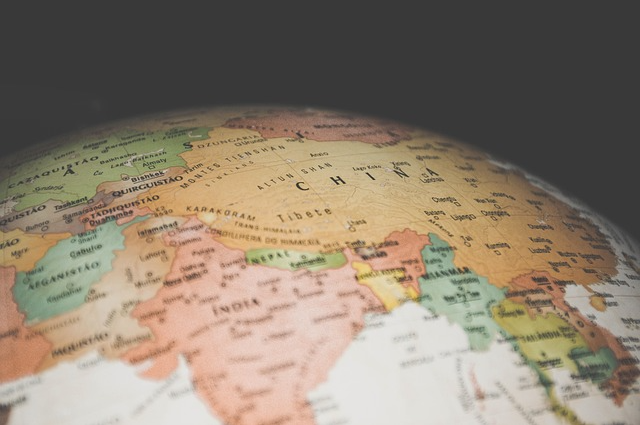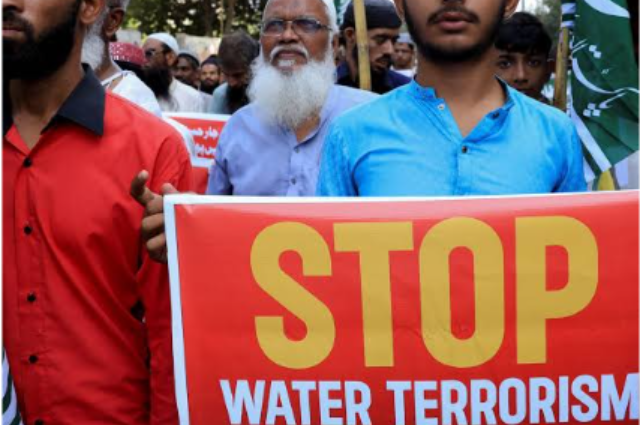
On April 22, 2025, the serene meadows of Pahalgam in Jammu and Kashmir turned into a scene of horror as a terrorist attack claimed the lives of 26 civilians, mostly tourists, marking one of the deadliest assaults on non-combatants in the region in nearly two decades. The attack, attributed to The Resistance Front (TRF), a proxy of the Pakistan-based Lashkar-e-Taiba, has ignited a firestorm of diplomatic and strategic retaliations between India and Pakistan, pushing the nuclear-armed neighbors to the brink of a dangerous standoff. India’s swift and sweeping response—suspending the Indus Waters Treaty, sealing the Attari-Wagah border, and expelling Pakistani military advisors—has been met with equally forceful countermeasures from Pakistan, including airspace closures and trade suspensions. As social media platforms like X buzz with speculation about further escalations, including India potentially closing its airspace to Pakistan’s international carriers, the specter of war looms large, underscored by Pakistan’s Defense Minister Khawaja Asif’s ominous warnings.
The Pahalgam Attack: A Catalyst for Crisis
Pahalgam, often described as a slice of paradise nestled in the Kashmir Valley, became a battleground when gunmen opened fire on unsuspecting tourists in the Baisaran Valley. The victims included 25 Hindu tourists, one Christian, and one local Muslim, with over 20 others injured. The brutality of the attack, targeting civilians in a region already fraught with tension, sent shockwaves across India. The government, led by Prime Minister Narendra Modi, quickly pointed to cross-border terrorism, accusing Pakistan of harboring and supporting groups like the TRF. The Resistance Front’s claim of responsibility, coupled with its known ties to Lashkar-e-Taiba, a UN-designated terrorist organization, fueled India’s narrative that Pakistan remains a haven for militants.

The attack’s timing and target were particularly provocative. Tourism in Kashmir has been a symbol of India’s efforts to integrate and stabilize the region since the revocation of Article 370 in 2019. An assault on tourists not only undermines these efforts but also inflames domestic sentiment, with candlelight vigils and protests erupting in cities like Srinagar, Delhi, and Mumbai. The National Investigation Agency (NIA) was tasked with probing the attack, and security forces launched operations, including the demolition of suspected terrorists’ homes in Bandipora, signaling a no-holds-barred response.
India’s Diplomatic Offensive: A Five-Pronged Strategy
Within 48 hours of the attack, India’s Cabinet Committee on Security (CCS), chaired by Modi and attended by key figures like Home Minister Amit Shah, External Affairs Minister S. Jaishankar, and Defence Minister Rajnath Singh, convened for a 2.5-hour meeting. The outcome was a robust diplomatic offensive aimed at isolating Pakistan and asserting India’s zero-tolerance policy on terrorism. Foreign Secretary Vikram Misri announced the measures in a press briefing, outlining a five-pronged strategy that has significantly altered the bilateral landscape.
First, India suspended the Indus Waters Treaty (IWT) of 1960, a World Bank-brokered agreement that governs the sharing of the Indus River system’s waters. The treaty, which has survived three wars, allocates the eastern rivers (Ravi, Beas, Sutlej) to India and the western rivers (Indus, Jhelum, Chenab) to Pakistan, with India allowed limited use for agriculture and hydropower. By holding the treaty “in abeyance until Pakistan credibly abjures cross-border terrorism,” India signaled its intent to leverage water as a strategic tool, potentially affecting Pakistan’s agriculture and power sectors, which rely heavily on the western rivers.
Second, India closed the Attari-Wagah border, the only operational land crossing for trade and people-to-people exchanges. Effective immediately, those with valid endorsements were given until May 1, 2025, to return, effectively halting cross-border movement. This closure disrupts symbolic interactions, such as the daily border ceremony, and impacts trade, which had reached a five-year high of $1.2 billion in 2024.
Third, India expelled Pakistani military, naval, and air advisors from the Pakistani High Commission in New Delhi, declaring them persona non grata with a week to leave. In a reciprocal move, India withdrew its advisors from Islamabad, reducing the strength of both high commissions to 30 personnel by April 30, 2025.
Fourth, India canceled all SAARC Visa Exemption Scheme (SVES) visas for Pakistani nationals, giving those in India 48 hours to depart. This measure effectively bars Pakistani citizens from traveling to India, except for Sikh pilgrims using the Kartarpur Corridor, which remains open for now.
Finally, the CCS directed security forces to maintain high vigilance and pursue the attack’s perpetrators and their sponsors relentlessly, drawing parallels to India’s extradition of Tahawwur Rana in a previous terror case. These measures, described as a response to “cross-border linkages” in the Pahalgam attack, reflect India’s intent to exert maximum pressure on Pakistan.
Pakistan’s Tit-for-Tat Retaliation
Pakistan’s response was swift and mirrored India’s punitive approach. On April 24, 2025, Prime Minister Shehbaz Sharif chaired a National Security Committee (NSC) meeting with military leaders, including Army Chief Asim Munir, to formulate countermeasures. The Pakistani government rejected India’s allegations of involvement in the Pahalgam attack, with Defense Minister Khawaja Asif dismissing them as “home-grown revolutions” against Indian rule in Kashmir and other regions. Pakistan’s statement condemned India’s actions as violations of international law and warned of severe consequences.
Pakistan’s most significant retaliatory step was closing its airspace to all Indian-owned or operated airlines, effective immediately and set to last until at least May 25, 2025. This move disrupts 70–100 daily flights by carriers like Air India, IndiGo, and SpiceJet, forcing rerouting via longer paths, increasing fuel costs, and causing delays on routes to Europe, North America, and the Middle East. The closure, reminiscent of a similar action in 2019 after the Balakot strikes, is estimated to cost Indian airlines hundreds of crores.
Pakistan also suspended all trade with India, including transit trade through third countries, and closed the Wagah border, mirroring India’s Attari closure. All cross-border transit was halted, with a deadline of April 30, 2025, for returnees. Additionally, Pakistan canceled SVES visas for Indian nationals, except for Sikh pilgrims, and instructed those in Pakistan to leave within 48 hours. The Indian High Commission in Islamabad was downsized to 30 personnel, and Indian military advisors were declared persona non grata, with a departure deadline of April 30.
Most critically, Pakistan rejected India’s suspension of the IWT, calling it a “blatant violation” of a binding agreement with no provision for unilateral suspension. The NSC declared water a “vital national interest” for Pakistan’s 240 million citizens, warning that any attempt to stop or divert water flows would be considered an “act of war” and met with a response across the complete spectrum of national power.” Reports from Muzaffarabad on April 26–27 claimed India released water from the Uri Dam into the Jhelum River without notification, causing flooding and panic, though India has not officially responded to these allegations.
Pakistan also suspended the 1972 Simla Agreement, which established the Line of Control (LoC) and rejected third-party mediation in Kashmir. This move, coupled with accusations of India “persecuting” Kashmiris and minorities, escalates the rhetorical stakes, signaling Pakistan’s readiness to challenge bilateral frameworks.
The Social Media Echo Chamber and War Rhetoric
The crisis has spilled onto platforms like X, where posts reflect both public sentiment and speculative fears. Some users report India is considering closing its airspace to Pakistan’s international airlines, a move that would further isolate Pakistan’s aviation sector. Such a step, if implemented, could escalate economic pressures, as Pakistan International Airlines (PIA) relies on Indian airspace for routes to Southeast Asia and beyond. These discussions, while unconfirmed, highlight the public’s anticipation of further tit-for-tat measures.
More alarmingly, Pakistan’s Defense Minister Khawaja Asif’s warning of potential war has amplified anxieties. Speaking to Geo News, Asif argued that the IWT involves stakeholders like the World Bank, making India’s suspension legally untenable. He emphasized Pakistan’s preparedness to respond “with full force,” a statement echoed by the NSC’s reference to defending sovereignty against any “misadventure.” On the Indian side, Defence Minister Rajnath Singh’s assertion that perpetrators would be “tracked and punished” and former army chief General Naravane’s call to “bare India’s fangs” suggest a readiness for military escalation if diplomacy fails.
Global Reactions and the Risk of Escalation
The international community has urged restraint. The United Nations called for “maximum restraint” and diplomatic resolution, while Russia and the United Kingdom issued travel advisories for Pakistan and Jammu and Kashmir, respectively. The U.S. State Department’s Level 4 “Do Not Travel” warning for Jammu and Kashmir cites terrorism risks, reflecting global concerns about the region’s volatility. Israel’s support for India’s right to self-defense, coupled with allegations of Hamas leaders visiting Pakistan-occupied Kashmir, adds a geopolitical layer to the crisis.
The suspension of the IWT is particularly contentious. Experts warn that altering water flows from projects like Kishanganga and Ratle could devastate Pakistan’s agriculture, which supports 40% of its workforce, and hydropower, which generates 30% of its electricity. Conversely, India could benefit by diverting more water for its own needs in Jammu and Ladakh, though this risks long-term environmental and diplomatic fallout. The treaty’s resilience through past conflicts underscores its importance, and Pakistan’s vow to approach international forums like the World Bank signals a legal battle ahead.
The Path Forward: Diplomacy or Conflict?
The India-Pakistan standoff is a high-stakes game of brinkmanship. Both nations have nuclear arsenals, and the LoC remains a flashpoint, with reports of Pakistani troops firing across it and Indian forces responding. The airspace closures, border shutdowns, and treaty suspensions have crippled bilateral ties, leaving limited channels for de-escalation. The Kartarpur Corridor’s continued operation offers a faint glimmer of hope, but the suspension of the Simla Agreement and the IWT threatens foundational agreements.
Strategic analysts warn that military action, such as targeted strikes akin to India’s 2019 Balakot operation, could escalate rapidly. Pakistan’s reference to its 2019 aerial response suggests preparedness for such a scenario. Meanwhile, domestic pressuresprotests in India demanding justice and Pakistan’s accusations of Indian aggression complicate de-escalation efforts.
The crisis demands urgent diplomacy. The World Bank, as the IWT’s mediator, could play a role, though Pakistan’s rejection of third-party mediation in Kashmir, per the Simla Agreement, limits options. Backchannel talks, historically used by both nations, may be the only way to prevent a slide into conflict. For now, the world watches as India and Pakistan navigate a perilous path, with the Pahalgam attack serving as a stark reminder of the region’s fragility.
